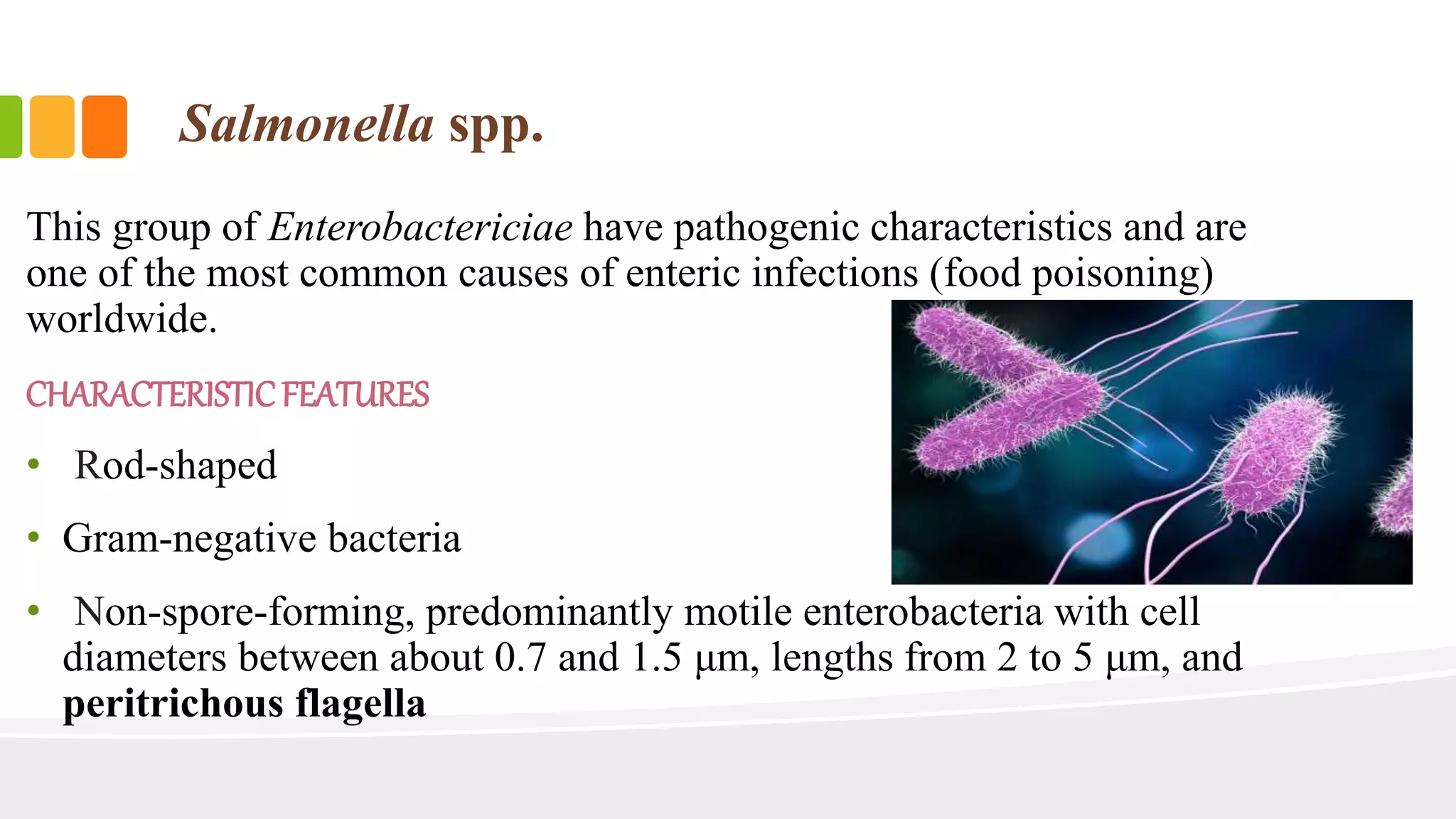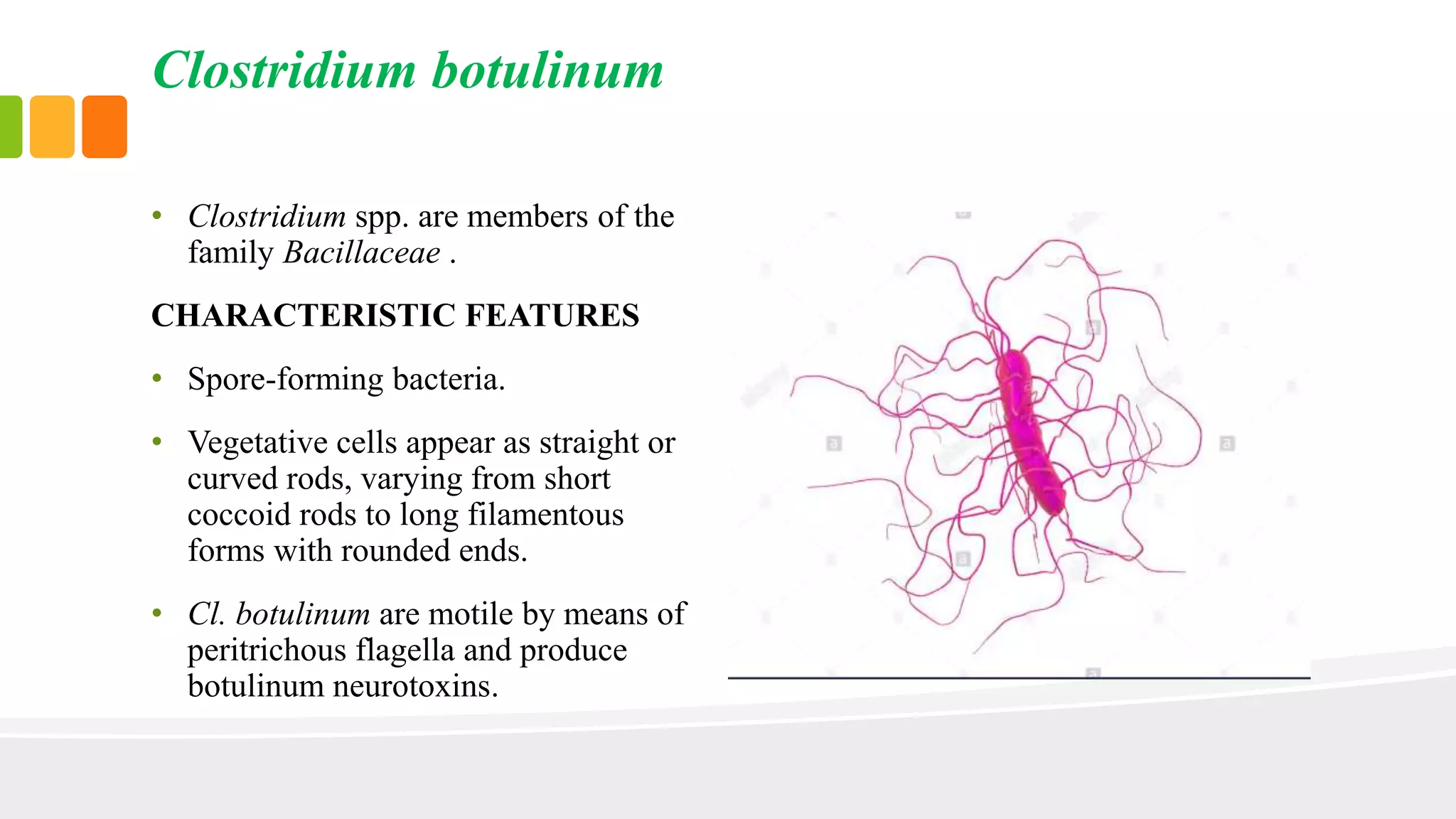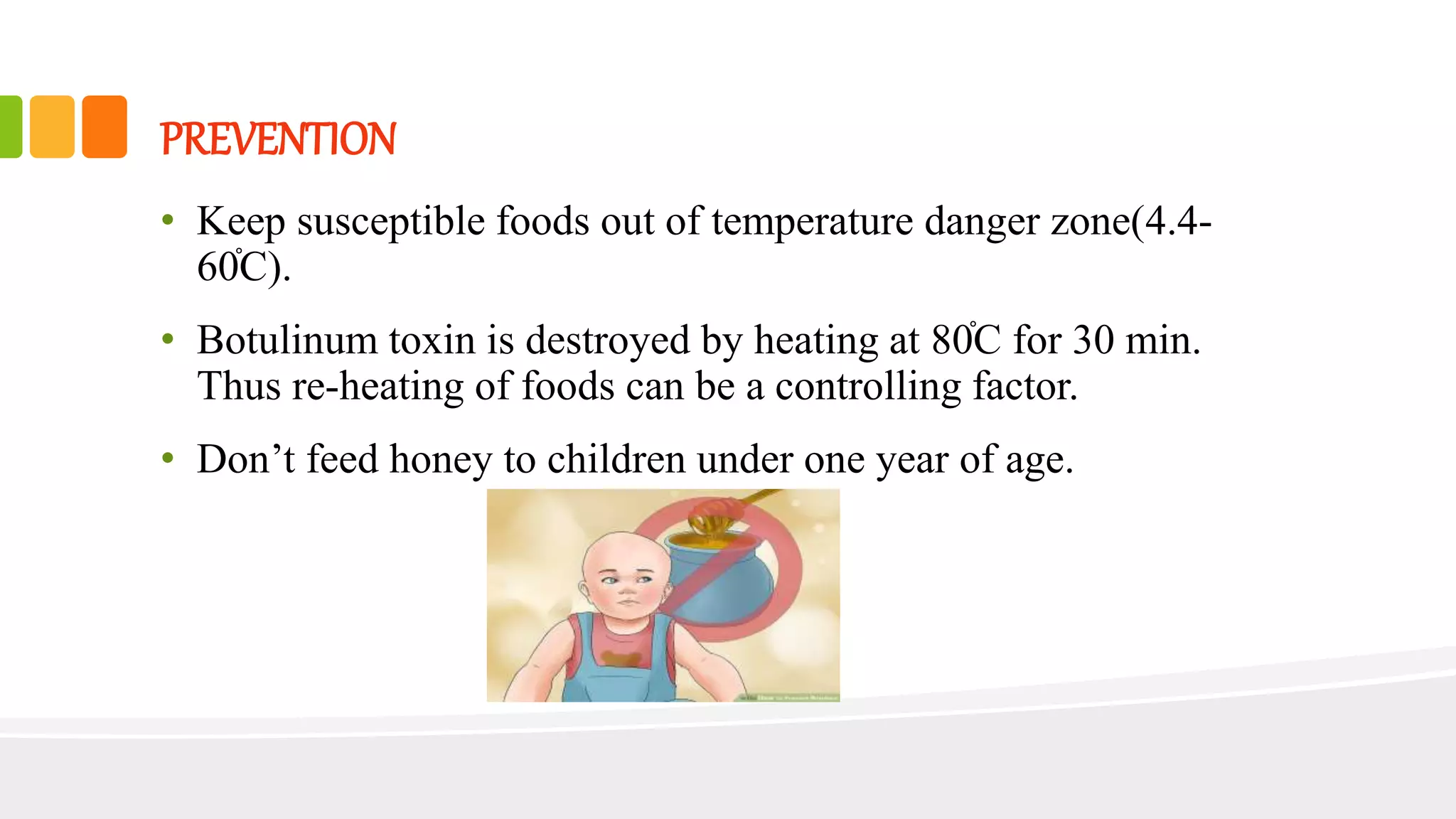This document discusses the differences between food infection and food intoxication. Food infection occurs when live bacteria are ingested and grow in the intestinal tract, while food intoxication happens when toxins formed by bacteria growth in food are ingested. Several pathogenic bacteria that can cause food infections or intoxications are described in detail, including their characteristics, where they are found, how transmission occurs, symptoms, and prevention methods.
















